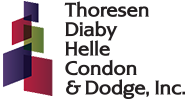
Ever wonder how the seemingly perfect company with great employees ends up finding fraud occurring within their organization? There are 3 key items when investigating fraud that are common to all frauds:
- Pressure/Incentive
- Opportunity
- Rationalization
These three items are known in professional literature as the “Fraud Triangle”

Pressure or incentive for fraud is really the motivation for the employee, management, vendor, etc. to commit fraud. These motivations can range from things such as:
- Loss of a spouses job
- Sick parent or loved one
- Gambling losses & drug addictions
- Financial struggles
- Debt covenants
- Bonus structure
Opportunity is the vulnerable areas that the fraudster finds in a Company where they could easily get past the controls that are in place or the lack of controls to misstate financial information, embezzle money or other company assets. Some examples of vulnerable areas in Companies are as follows:
- Lack of oversight/supervision
- Too much trust in one individual
- No segregation of duties within cash (i.e., same person that makes deposits & signs checks, also reconciles the bank account)
Rationalization is the last common item found and is how the fraudster rationalizes what they have done which helps them justify their actions. Common comments for rationalizing are:
- “I will pay it back”
- “They owe me this”
- “I have been treated unfairly”
- “We will only falsify our financial statements until we get over this temporary hump”
No matter the perpetrator of fraud (employee, management, or outside party) these three items always exist. When doing a fraud risk analysis on the Company, ownership/management should look at the fraud triangle see if they can put steps in place or change procedures to mitigate pressures, incentives or opportunity in their Companies.
